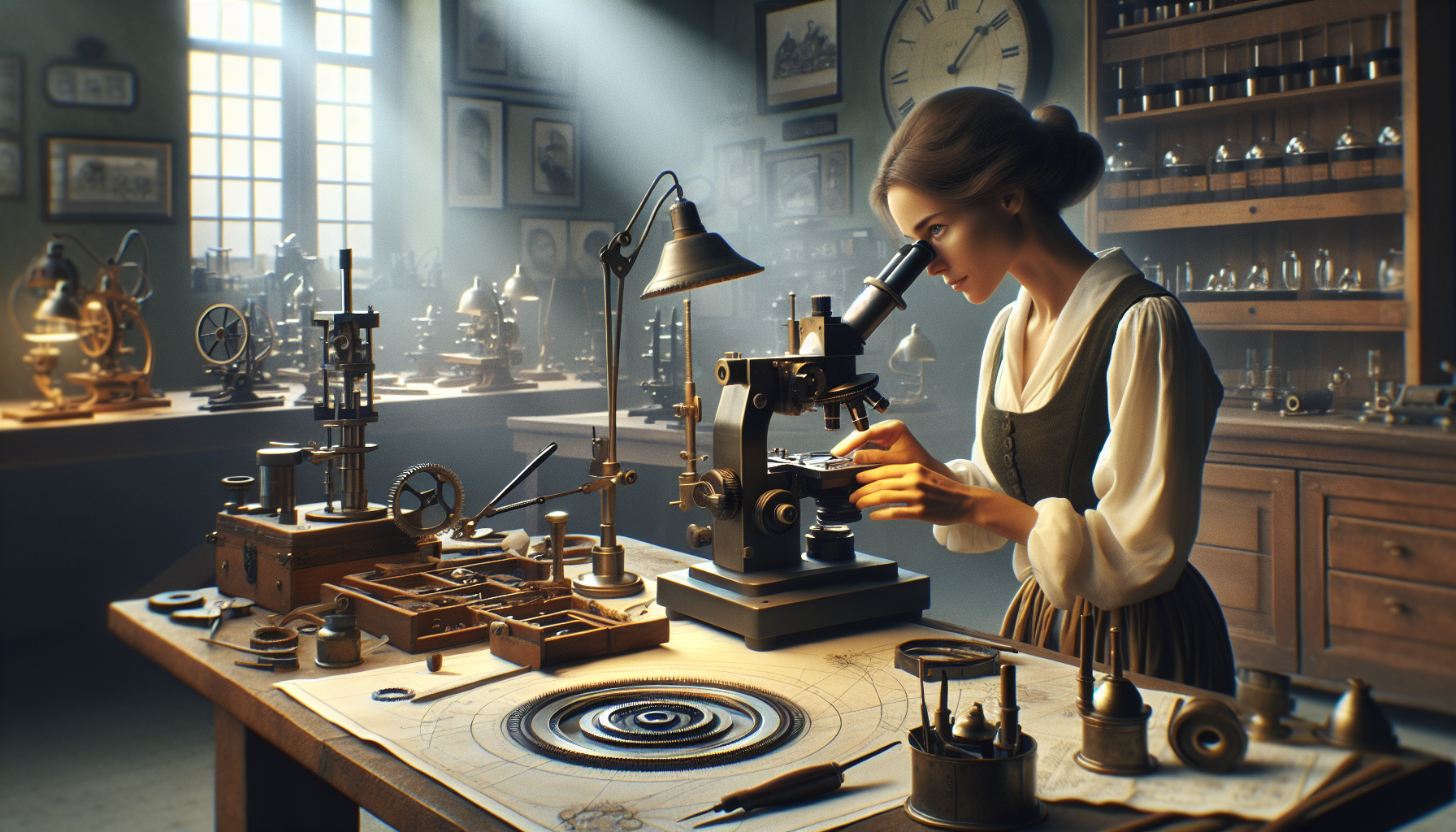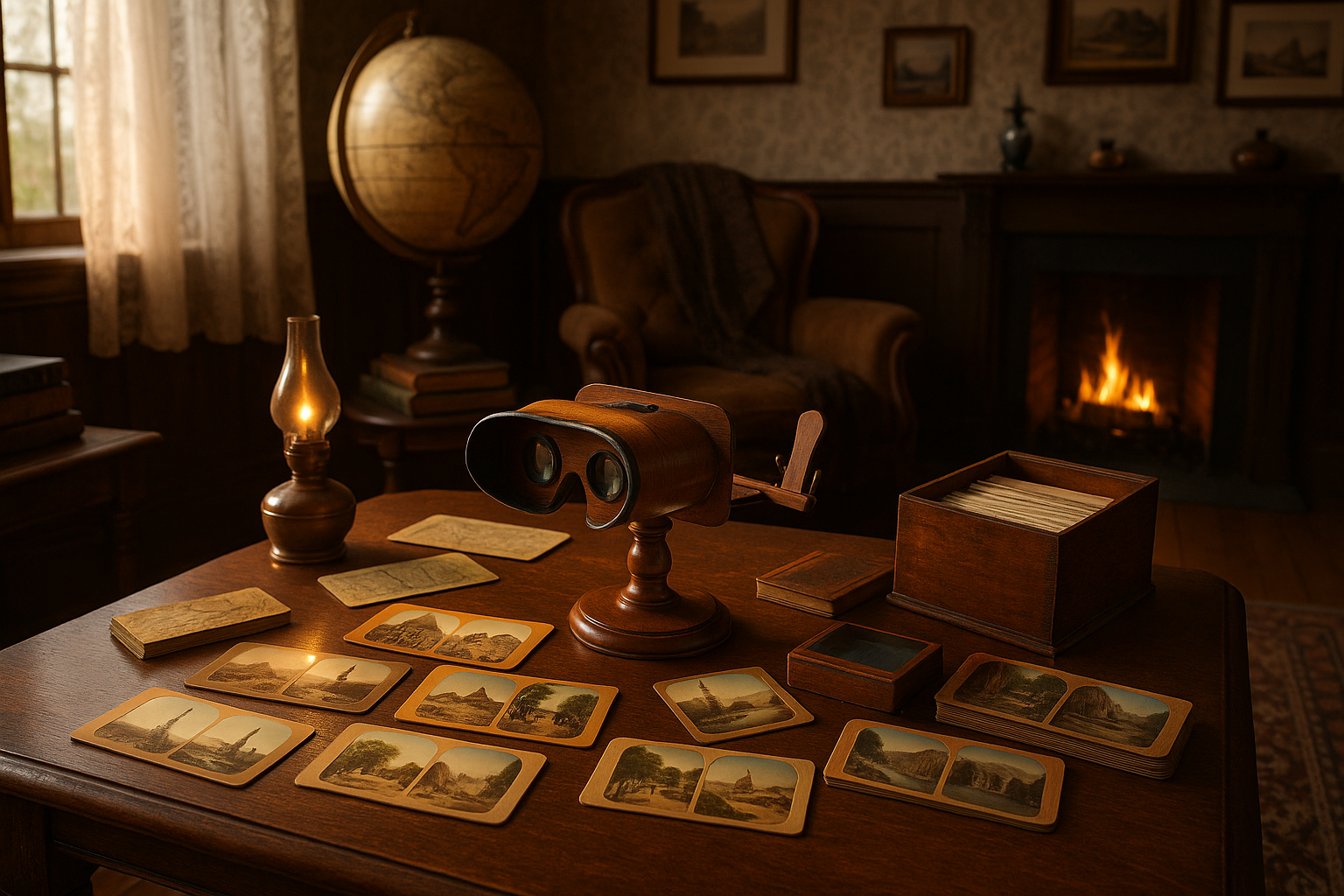In the heart of bustling metropolises and quaint villages alike, a tradition steeped in precision and innovation quietly thrives, often unnoticed by the untrained eye. This is the world of optical guilds—an enigmatic realm where artisans and engineers blend science with artistry to push the boundaries of what’s possible in vision technology. For centuries, these guilds have not only preserved the delicate craft of lens-making but have also driven groundbreaking advancements that continue to shape the way we see the world. In an era dominated by rapid technological advancements, it’s both surprising and reassuring to find that the roots of modern optics are firmly planted in traditions that date back hundreds of years. 🌟
The journey into the secrets of optical guild traditions is akin to stepping into a time machine, where each lens crafted tells a story of ingenuity and meticulous skill. At its core, the optical guild is a tapestry woven from countless narratives of master craftsmen, each contributing to a legacy that marries age-old techniques with cutting-edge innovations. These guilds, often shrouded in mystery, function as custodians of an art form that requires a delicate balance between maintaining traditional methods and embracing modern technology. But what exactly goes on behind the doors of these guilds? How do they maintain their relevance in today’s fast-paced world, and what lessons can we learn from their enduring legacy?
To truly understand the profound impact of optical guilds, we must first delve into their rich history. Originating in medieval Europe, these guilds were established as protective associations of artisans who specialized in crafting optical instruments. Over the centuries, they evolved into vibrant communities that played pivotal roles in scientific discoveries and technological breakthroughs. From Galileo’s telescopic observations of the stars to the precision lenses used in modern microscopes, optical guilds have consistently been at the forefront of vision science. Their story is not just one of adaptation and survival but of leadership in innovation and quality that set the standards for optical excellence globally.
In this exploration, we will unravel the techniques and traditions that have been meticulously passed down through generations of optical craftsmen. We’ll examine how these guilds have seamlessly integrated modern technology without compromising their commitment to precision. From hand-polished lenses to state-of-the-art manufacturing processes, the evolution of optical craftsmanship is a testament to human ingenuity and dedication. Moreover, we’ll shine a light on some of the most iconic innovations that emerged from guild workshops, showcasing how they have shaped entire industries and impacted our everyday lives. 🔍

The Evolution of Optical Guild Traditions
Optical guilds have played a pivotal role in the advancement of precision and innovation in the field of optics. The history of these guilds dates back to medieval times, when artisans banded together to protect their craft and share knowledge. These guilds were not only centers of skill development but also catalysts for technological advancements. In this section, we delve into the evolution of optical guild traditions and how they have shaped the modern world of optics.
The concept of guilds originated in medieval Europe as associations of craftsmen and merchants. These guilds were designed to protect the interests of their members, ensuring quality control and fair trade practices. In the realm of optics, guilds were instrumental in developing standards for lens making, a critical component in the evolution of telescopes and microscopes. By setting rigorous standards, optical guilds ensured that the quality of lenses produced was consistent, leading to more accurate scientific observations and discoveries.
Throughout the Renaissance, optical guilds continued to evolve, adapting to new technologies and methodologies. The invention of the printing press allowed for the dissemination of optical theories and techniques, further enhancing the knowledge base within these guilds. Members were encouraged to experiment and innovate, leading to significant breakthroughs in optical science. This collaborative environment fostered a spirit of innovation that persists in modern optical industries today.
Modern-Day Impact of Optical Guilds
The traditions established by historical optical guilds continue to influence modern optical practices. Today, these guilds have transformed into professional organizations and societies dedicated to the advancement of optical science and engineering. They play a crucial role in setting industry standards, promoting research, and advocating for the ethical use of optical technologies.
One of the key contributions of modern optical guilds is the establishment of professional certifications. These certifications ensure that practitioners meet rigorous standards of expertise and competence. By doing so, they maintain the integrity and reliability of optical work, whether in academic research or commercial applications. Furthermore, these guilds provide continuous education opportunities, allowing members to stay abreast of the latest technological developments and industry trends.
In addition to professional development, modern optical guilds are actively involved in policy advocacy. They work with government agencies and industry leaders to develop regulations that promote safety and innovation. By influencing policy, these guilds ensure that the optical industry remains at the forefront of technological advancements while safeguarding the interests of both practitioners and the public.
Innovations Born from Optical Guild Traditions
The legacy of precision and innovation established by optical guilds is evident in the numerous technological advancements that have emerged from this tradition. From the development of high-quality lenses to the creation of advanced imaging systems, optical guilds have been at the forefront of many groundbreaking innovations.
One notable innovation is the advancement of laser technology. Lasers have become indispensable tools in a variety of fields, including medicine, communications, and manufacturing. The precision and accuracy required in laser development can be traced back to the meticulous standards set by optical guilds. By fostering a culture of precision, these guilds laid the groundwork for the precise control of light that lasers require.
Another significant contribution is the development of fiber optics, which revolutionized the telecommunications industry. Fiber optics rely on the transmission of light through highly pure and precise glass fibers, a concept rooted in the optical guilds’ emphasis on high-quality materials and craftsmanship. Today, fiber optics enable high-speed internet and telecommunications, connecting people around the globe with unprecedented speed and reliability.
Check out this informative video on the impact of optical guilds on modern technology: The Optical Guilds: A Legacy of Innovation.
Comparative Analysis of Historical and Modern Optical Guilds
As demonstrated in the table above, the shift from local craft-based associations to global professional organizations has expanded the reach and influence of optical guilds. This evolution reflects the broader trend of globalization and technological advancement in the modern world.
With the increased scope and influence of modern optical guilds, the potential for innovation and impact is greater than ever. By continuing to adhere to the traditions of precision and innovation, these guilds remain at the forefront of optical science and technology, paving the way for future breakthroughs.
- Explore how optical guilds have influenced modern technology.
- Understand the historical significance of guild traditions.
- Discover the innovations born from optical guild standards.
Conclusion
Unlocking the secrets of optical guild traditions unveils a fascinating journey into a world where precision meets innovation, rooted in a rich history that has profoundly shaped modern optical practices. This exploration has taken us through the evolution of optical craftsmanship, revealing how past masters have paved the way for the technological advancements we enjoy today. In this conclusion, we will revisit the key points discussed, underscore the significance of preserving and learning from these traditions, and encourage further engagement with this compelling subject.
Throughout our exploration, we examined the origins of optical guilds, highlighting their emergence during the medieval period as centers of excellence in lens-making and optical instrument design. These guilds were not only vital in maintaining high standards of quality and precision but also served as incubators for innovation. The meticulous craftsmanship honed over centuries laid the groundwork for modern optical science, influencing everything from corrective eyewear to complex imaging systems.
One of the most critical aspects of these guilds was their commitment to passing down knowledge through generations. Apprenticeship systems ensured that skills were not only preserved but continuously refined and adapted to meet the changing needs of society. This tradition of mentorship and skill transfer remains relevant today, as it emphasizes the importance of hands-on experience and learning from established experts in the field.
We also explored the symbiotic relationship between optical guilds and scientific advancement. As guild members refined their craft, they contributed significantly to the broader scientific community. The precision lenses they produced were instrumental in astronomical discoveries, leading to a deeper understanding of our universe. This partnership between craft and science is a testament to the power of collaboration and interdisciplinary innovation.
In the modern context, the legacy of optical guild traditions is evident in the cutting-edge technologies that continue to transform our lives. From advanced medical imaging techniques to high-resolution cameras and beyond, the principles of precision and innovation remain at the forefront. By understanding and appreciating the historical roots of these technologies, we can better appreciate the advancements we often take for granted.
The significance of optical guild traditions extends beyond mere technological impact. These traditions embody a commitment to excellence, a respect for craftsmanship, and a dedication to continuous improvement—values that are as important today as they were centuries ago. In a fast-paced world where technology often prioritizes speed over quality, revisiting these traditions reminds us of the enduring value of meticulous craftsmanship and thoughtful innovation.
As we conclude this exploration, it is essential to reflect on the lessons we can draw from the legacy of optical guilds. Their emphasis on precision, collaboration, and knowledge-sharing serves as a model for modern practitioners in any field. By embracing these principles, we can foster environments that nurture creativity and drive progress.
We encourage you, our reader, to delve deeper into the world of optical guild traditions. Whether through further research, discussions with experts, or simply appreciating the craftsmanship behind everyday optical devices, there are countless ways to engage with this rich legacy. Share your thoughts and insights with others, sparking conversations that keep these traditions alive and relevant in contemporary discourse.
In the spirit of continued learning and exploration, here are some resources to further your understanding of optical guild traditions and their impact:
1. Smithsonian Institution’s History of Optics – Explore detailed accounts and artifacts related to the development of optical science.
2. International Commission for Optics – Discover current research and advancements in the field of optics.
3. Museum of the History of Science, Oxford – A treasure trove of historical optical instruments and resources.
The enduring legacy of optical guilds is a powerful reminder of the impact that dedication, collaboration, and innovation can have on society. Let us carry forward the spirit of these traditions, applying their timeless principles to the challenges and opportunities of our modern world. By doing so, we honor the past and pave the way for a future where precision and innovation continue to illuminate our path.
Thank you for joining us on this journey. We look forward to your thoughts and hope this exploration inspires you to share and apply the knowledge gained. Let’s keep the conversation alive, and together, unlock the secrets of our shared optical heritage. 🔍✨
Toni Santos is a visual historian and artisan whose creative lens is captivated by the forgotten marvels of antique optical devices. Through his thoughtful storytelling, Toni revives the instruments that once transformed light into wonder—camera obscuras, magic lanterns, kaleidoscopes, and other ingenious tools that shaped our earliest visual imaginations.
His journey is rooted in a fascination with how humans have long sought to bend, reflect, and reveal the unseen. Whether tracing the mechanical poetry of 19th-century projectors or illustrating the tactile elegance of early lenses, Toni’s work invites us to see vision itself as an evolving art form.
Blending handcrafted design with historical inquiry, Toni brings to life the material soul of these devices—celebrating not just how they functioned, but what they meant. His creations and curated stories illuminate a world where science, illusion, and beauty were intricately linked through glass and brass.
As the curator of Vizovex, Toni shares detailed studies, reconstructed artifacts, and immersive content that help others rediscover the origins of visual technology and the magic of analog perception.
His work is a tribute to:
The craftsmanship behind early visual instruments
The wonder of seeing through the eyes of another century
The intersection of optics, art, and imagination
Whether you’re a collector, a designer, or someone drawn to the lost poetry of vision, Toni welcomes you into a world where light is a storyteller—one prism, one lens, one forgotten invention at a time.





